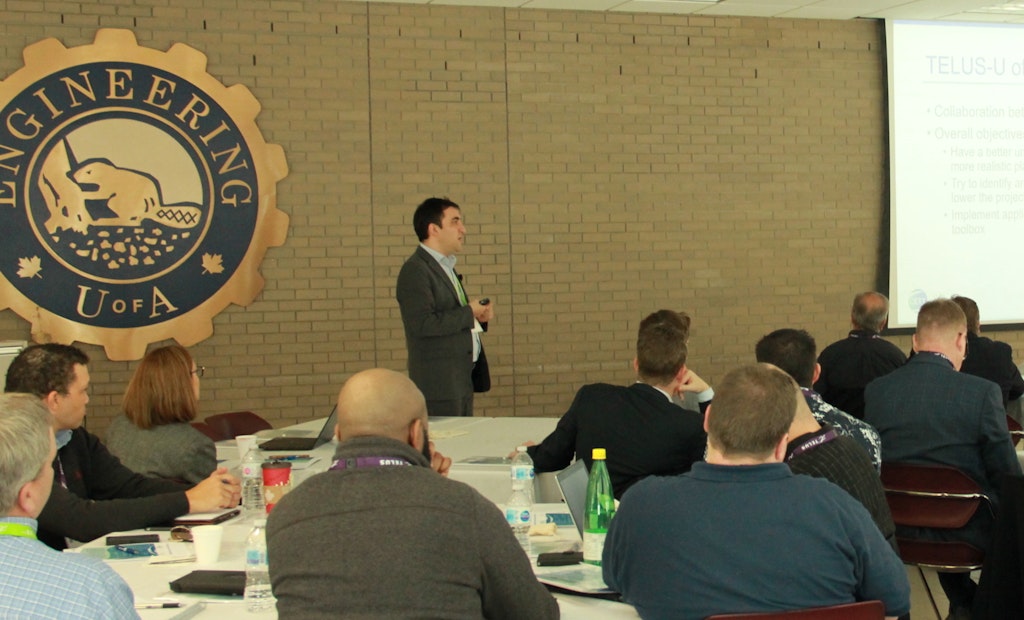
Dr. Ali Bayat, engineering professor at the University of Alberta and director of the new Canadian Underground Infrastructure Innovation Centre
Interested in Education/Training?
Get Education/Training articles, news and videos right in your inbox! Sign up now.
Education/Training + Get AlertsA new industry organization has formed in Canada, with a goal of advancing research and education surrounding all aspects of underground infrastructure.
The Canadian Underground Infrastructure Innovation Centre (CUIIC) is in essence a merger of two previously existing groups largely focused on trenchless technologies that worked out of the University of Waterloo and the University of Alberta. The new organization will be based out of the University of Alberta. The hope, says Dr. Ali Bayat, an engineering professor at the school and now director of CUIIC, is that CUIIC can expand the focus that those organizations had.
“It has a wider mandate,” Bayat says. “It’s not only focused on trenchless technologies. The focus is underground infrastructure all around. The mission is to be a hub for research, education and innovation related to different aspects of underground infrastructure.
“When you look at underground there’s a wide community in different disciplines — water and wastewater, energy pipelines, telecommunications infrastructure, gas distribution, electricity. We hope to be the home for different groups or sectors that are active in the underground domain and bring them together under one roof and facilitate interaction and collaboration. There are tremendous opportunities. Underground infrastructure is growing every day, whether it’s new installations or taking care of existing infrastructure. There is a need for innovation, for educating the next generation of professionals. We hope that building that community will bring opportunities of collaboration and innovation.”
Among the CUIIC’s first undertakings is a new digital platform to facilitate the networking of people in the underground community called CUIIC Connect.
“Every organization that joins CUIIC, up to 25 of their members can partake in this digital platform, which includes technical forums and specialized groups,” Bayat says. “We hope it helps people easily exchange their experiences and knowledge and be able to interact with their counterparts in different areas as well as learn from other sectors.”
On the education side, CUIIC has plans to start offering classes in the fall. A committee is being formed to tackle that area and make sure that offerings are beneficial for people. Likewise on the research end for what specific projects are pursued.
“We’re trying to be sure the committees are diverse. People from different areas and different sectors,” Bayat says. “And we’re going to run surveys to make sure we’re addressing the needs of the industry.”
The approach to research will be unique compared to what occurred under the previous organizational structure, says Bayat. CUIIC members will be more involved in the process from the start, helping to drive what gets targeted for further study. It will also be more accessible for members to be a part of research studies. The goal is that the pooling of CUIIC dues will create a situation in which individual members can be involved in research efforts but do so without a significant financial stake.
“By joining CUIIC, they’re not just a member, they’re also an official research partner,” Bayat says. “Collectively, every year, we’re going to identify top problems that exist. Then we’ll invite anyone with that skill set to partake in finding the solution. We are hoping to build a community so that everyone comes in at a lower dollar value. In the past it typically cost more for someone to partner on a study. It would require tens of thousands of dollars and was not affordable for every municipality or industry party to participate. It was limited parties participating. In this model, we hope to build a community of underground people, and as a crowd we can all be part of the problem-solving.”
Some topics are being discussed for initial research projects, but it will ultimately be up to the CUIIC membership.
“Risk is always an important issue directly linked to speed. We want to build things faster, but underground is a world of unknowns so the risk is higher,” Bayat says. “So identifying the means of lowering that risk and adding speed without any damage is a key issue. In the future we’ll need to build underground infrastructure at a much faster, cheaper, and safer rate. Climate change and greenhouse gas is an important topic for public. We need to have innovative ways that we build or rehabilitate underground infrastructure in more environmentally friendly ways. These are general things we are thinking, but membership will guide the direction and where they see the need for research.”
Although based in Canada, Bayat says he sees CUIIC being a good resource for underground infrastructure stakeholders worldwide.
“We are called the Canadian Underground Infrastructure Innovation Centre, but to be active in underground infrastructure innovation, it doesn’t limit us to only Canadian entities,” Bayat says. “We have organizations from overseas joining. We hope to build a network globally.
“A key principle for us is inclusiveness and participation. Members are going to have a big role in defining the directions we’re going, the education we’re going to prepare, the research we’re going to conduct. They’re going to have a leadership role basically.”
CUIIC is still in its early stages, with committees being formed and membership gradually growing. But Bayat expects activity to pick up soon in the coming months.
“We are really happy with the way things are moving, there has been strong support in the industry up to this point. We hope at the rate organizations are joining that we will be able to go after the first major grant application in the next few months. The research is going to get started. Education is being planned. The networking platform is in the final stage of finishing the infrastructure.
“I invite all parties that work in underground infrastructure to come join this community, be a part of it and play a role. I think there is a lot happening here. We hope to be a future place of innovation. I think it’s going to be important for the future of this industry to attract younger talents, younger generations, get them interested and be able to play a role.”
For more information, visit cuiic.ca.






